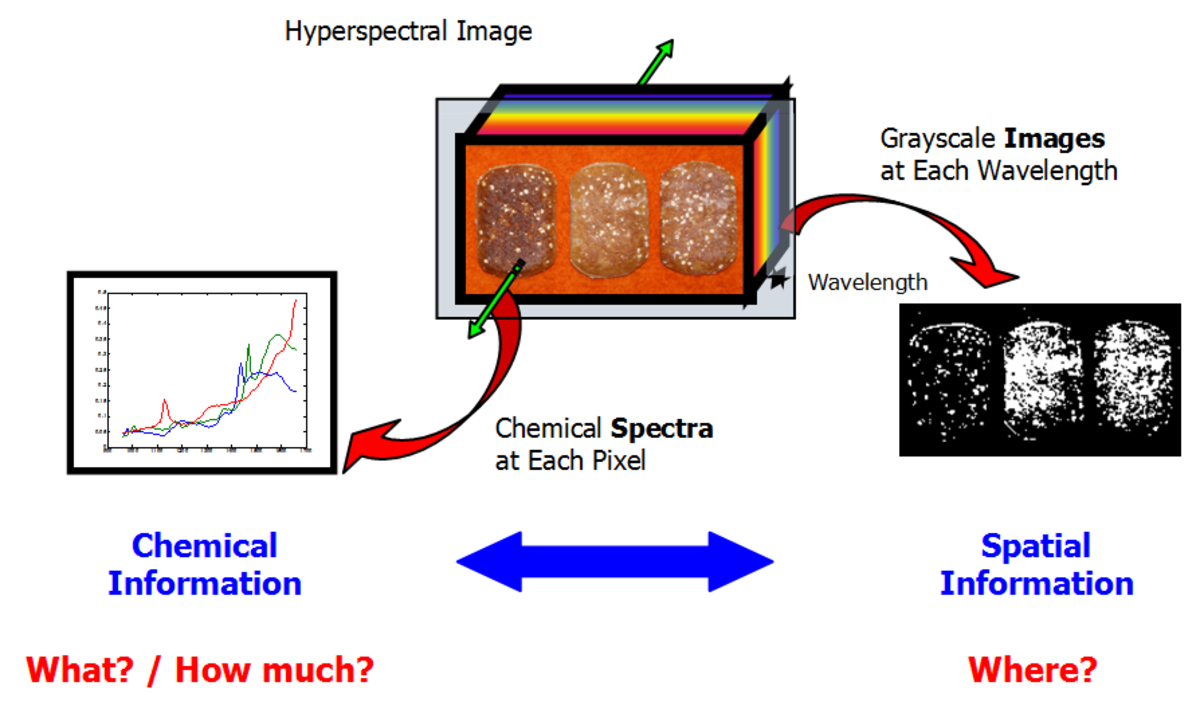
Hyperspectral imaging (HSI) is a hybrid measurement technique, combining spectroscopy with imaging. Hyperspectral images (hypercubes) represent a three dimensional data set: two spatial axes and one spectral axis. The data in such hypercubes can be equally interpreted as a series of two dimensional matrices (traditional spatial images) at many different wavelengths or color bands, or as collections of one dimensional vectors (spectra), each containing the full spectrum from many different spatial locations across a sample.
The spectral information in a hypercube can be used to obtain chemical information. This can include both chemical identification or classification, and chemical quantification, answering the questions What? and How much? By combining spectroscopy with imaging, we can also answer the chemical question: Where? Hyperspectral cameras are now available for UV, Vis, NIR, and IR regions of the light spectrum, with lens optics providing image spatial resolutions ranging from microscopic to mm, cm, or larger. Hyperspectral chemical imaging has the potential for a wide range of applications: bio-medical research, particle size distributions of pharmaceutical products, sugar content and bruising of fruit, fat and protein distribution in meat, surface contamination of poultry products, sorting of recycled plastics and glass, quality inspection of wood products, contamination of animal feed.
Hyperspectral images contain a massive quantity of digital data. Multivariate statistics based techniques (chemometrics) must be used to extract the chemical and physical information. This seminar presentation will include the history and theory of hyperspectral image instrumentation, as well as descriptions and demonstrations of some interactive software tools for hyperspectral chemical image analysis. A near infrared (NIR) system will be available for demonstration purposes. Seminar participants are encouraged to bring their own interesting samples (up to 50 x 30 mm) for imaging to enhance discussions.
Hyperspectral images contain a massive quantity of digital data. Multivariate statistics based techniques (chemometrics) must be used to extract the chemical and physical information. This seminar presentation will include the history and theory of hyperspectral image instrumentation, as well as descriptions and demonstrations of some interactive software tools for hyperspectral chemical image analysis. A near infrared (NIR) system will be available for demonstration purposes. Seminar participants are encouraged to bring their own interesting samples (up to 50 x 30 mm) for imaging to enhance discussions.